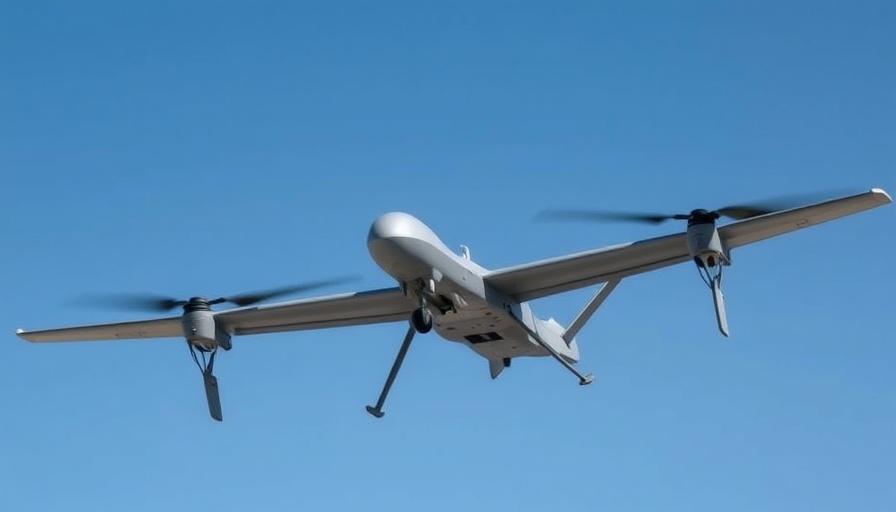
Revolutionizing Military Strategies with the MQ-9A
In a groundbreaking achievement in military technology, General Atomics Aeronautical Systems, Inc. (GA-ASI) and AeroVironment have successfully executed the first-ever air launch of the Switchblade 600 loitering munition from an MQ-9A unmanned aircraft system (UAS). This momentous event, which unfolded at the U.S. Army Yuma Proving Grounds Test Range from July 22-24, 2025, signifies a pivotal advancement in the evolving landscape of aerial warfare.
Enhancing the Battlefield with Innovative Technology
This innovative collaboration underscores the potential of integrating various unmanned aerial technologies to create a more effective battlefield strategy. According to GA-ASI President David R. Alexander, utilizing the MQ-9A as a mothership for the Switchblade 600 extends operational capabilities significantly. It allows military personnel to stand further away from enemy weapon systems, thus enhancing safety and increasing the loitering munition’s range and operational effectiveness.
How the Test Was Conducted
During this historic test, two Switchblade 600s were launched—one equipped with an inert warhead and the other with an explosive payload. This real-time transfer of control from an operator in the MQ-9A’s ground control station to a user on the ground near the operational zone illustrates the seamless integration of advanced technology in real-life scenarios, enhancing situational awareness and military responsiveness.
A Broader Perspective on Unmanned Technologies
The successful air launch of the Switchblade 600 not only represents a technical victory but also illustrates a strategic evolution in military operations. By combining forces with partners like AeroVironment, GA-ASI continues to showcase how innovative technologies can transform command decisions and mission planning. This shift emphasizes the importance of reliable integration of airborne technologies, which provide commanders with versatile, risk-adjusted options in contested environments.
Future Implications for Military Strategy
Looking ahead, this pioneering launch sets the stage for future developments in unmanned aviation systems and loitering munitions. As military operations become increasingly complex, the need for adaptable and robust technologies will grow. This successful test signifies a step towards more integrated drone warfare, where UAS play a crucial role in future engagements.
The ongoing advancements not only bolster national security but also reflect a broader trend towards the automation of warfare, which could revolutionize how conflicts are conducted. As nations continue to invest in such technologies, the implications for global defense strategies could be profound.
 Add Row
Add Row  Add
Add 




Write A Comment